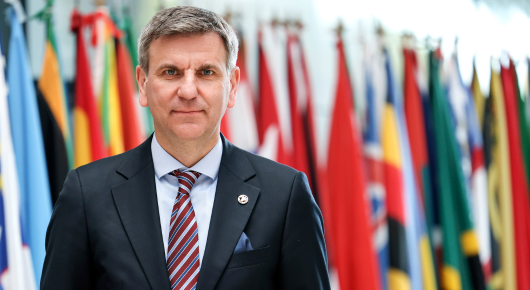
Regional Representative: Viorel Gutu
Viorel Gutu has gained over 30 years of experience in agricultural development, enterprise restructuring, structural reforms, and private business development through his involvement in the public and private sector, and implementation of international projects.
A national of the Republic of Moldova, Viorel Gutu was appointed to the post of FAO Assistant Director-General and Regional Representative for Europe and Central Asia in February 2024. Prior to that he served as FAO Subregional Coordinator for Central Asia and Representative for Türkiye and Uzbekistan.
He joined FAO in 2014 as the head of the FAO Tajikistan office, leading the Country Office in establishing productive relations with the national government and key donors.
Before joining FAO, Gutu was Deputy Minister of Agriculture and Food Industry in the Republic of Moldova. In this position, he was responsible for the coordination, monitoring and evaluation of strategic policy implementation in agriculture and rural development. He also served as an economic affairs officer with the United Nations Transitional Administration in East Timor, where he dealt with peacekeeping operations, poverty alleviation and the prevention of emergency situations. He holds a doctoral degree in economics.
@FAOADG_ECA

Forum: Reducing waste will benefit agrifood systems, water security and climate
08/12/2025
Every day, small, often-invisible losses accumulate. A crate of tomatoes spoils before delivery. A restaurant prepares more meals than will be served. A household discards food it never used. These ordinary moments carry an extraordinary consequence: They consume water we can’t afford to waste, thus accelerating the climate crisis. Globally, one-third of all food produced is lost or wasted. Every piece of uneaten food represents a waste of water, land, energy and labour.
.tmb-th600x400.png?Culture=en&sfvrsn=88e127e7_2)
European Commission on Agriculture session to discuss producing more with less
02/10/2025
.tmb-th600x400.png?Culture=en&sfvrsn=45033b98_2)
Regional experts unite to strengthen defenses against animal diseases in Europe and Central Asia
30/09/2025
The event, supported by the European Union, marked the twentieth anniversary of GF-TADs Europe, a platform led by the Food and Agriculture Organization of the United Nations (FAO) and the World Organization for Animal Health (WOAH) to guide coordinated action against animal health threats.
